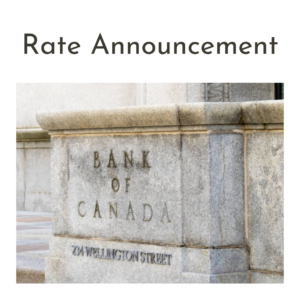
Part One: Unlocking Your Property’s Hidden Value: The Power of Equity
Most real estate might appear to be comprised of four walls and a roof, but beneath the surface lies a hidden gem: your property’s equity. In this series, we’re simplifying the concept of property equity to introduce you to a potentially powerful tool—the Home Equity Line of Credit (HELOC).
A Home Equity Line of Credit (HELOC), also referred to here as a Line of Credit, grants you access to your property’s equity without selling it. Whether it’s your primary residence, a vacation home, or a rental property, a HELOC is one piece of the financial puzzle to increasing your net worth. Please see our subsequent posts for more on its uses, but first, here’s how it works.
HELOCs differ from standard mortgages. With a Line of Credit, you borrow only what’s needed, and interest accrues solely on the borrowed sum. Early repayment bears no penalties. The rate is based on the Prime Rate plus a certain premium. It should be noted the premium can change at any time and lenders can require HELOCs to be repaid at any time, but those changes and requirements are rare. Some lines of credit don’t require a minimum interest payment as long as there’s room between the amount you’ve used and the limit. There are some instances in which this might be useful though it’s best to maintain at least the interest due if possible.
On a property worth $800,000 with a mortgage balance of $300,000, the gap of $500,000 signifies your equity—a valuable asset. Should you qualify, lenders can offer stand-alone lines of credit with limits of up to 65% of the value of the property. Lenders offering mortgages in combination with HELOCs will lend up to 80% of the value of your property as a combined balance.
In our example, 80% of the property’s $800,000 value is $640,000. As such, your mortgage of $300,000 would leave $340,000 of your equity available as the limit on a line of credit for a total of 65% of the value of your property. Some lenders will raise the line of credit limit in proportion to the amount you pay down on the mortgage side, to a maximum of 65% of the value of the property. Once the mortgage in our example is paid to zero, the borrower would then have a line of credit limit of $520,000 available to them, equating to 65% of the value of the property.
A HELOC is more than a tool—used wisely, it can be stepping stone toward a more secure future. You can use it to fund renovations, make deposits on future properties to prevent having to rent between purchases, manage post-retirement finances, or address other expenses—all while retaining property ownership. Anyone who owns property should consider whether a HELOC might be an essential part of their financial portfolio.
Stay tuned for upcoming posts in this series, where further benefits and strategies to leverage this financial tool will be illuminated. For more information, please feel free to reach out any time.
Image Credit: Tierra Mallorca on Unsplash







